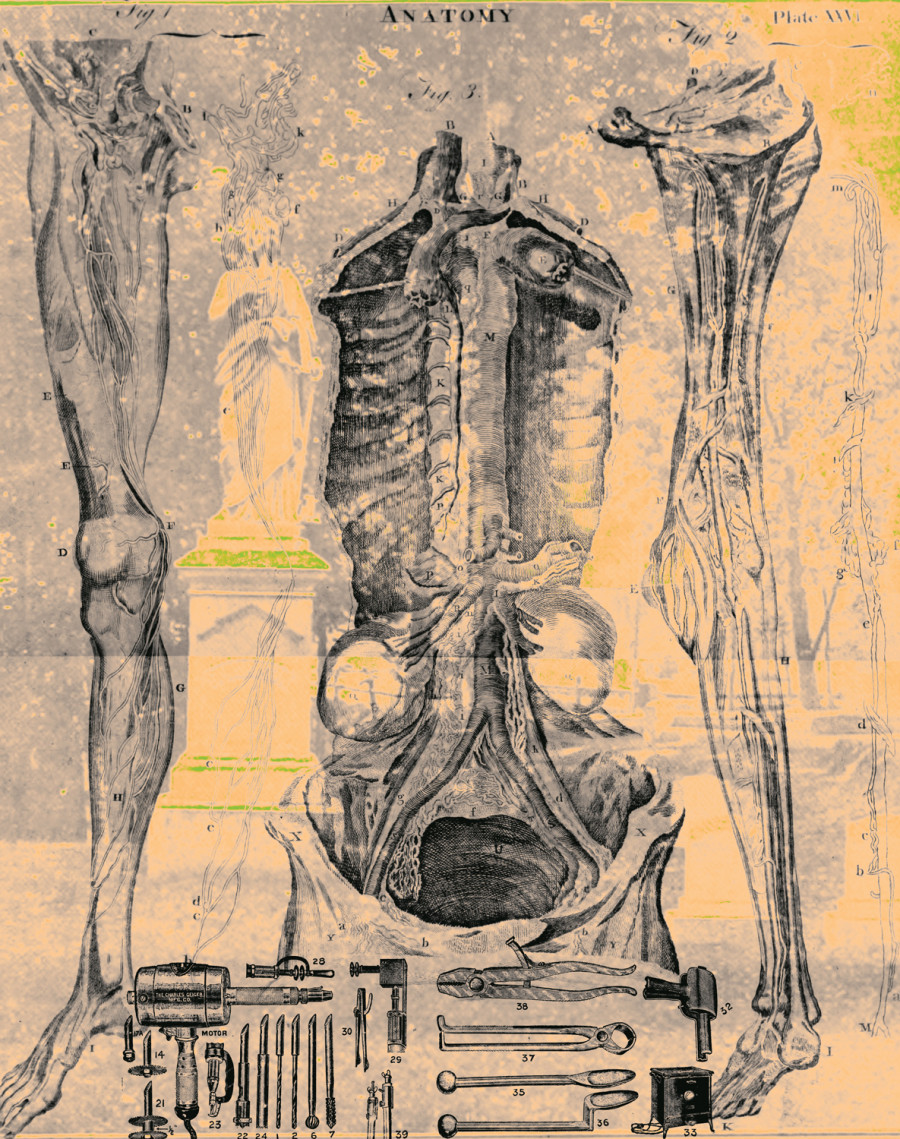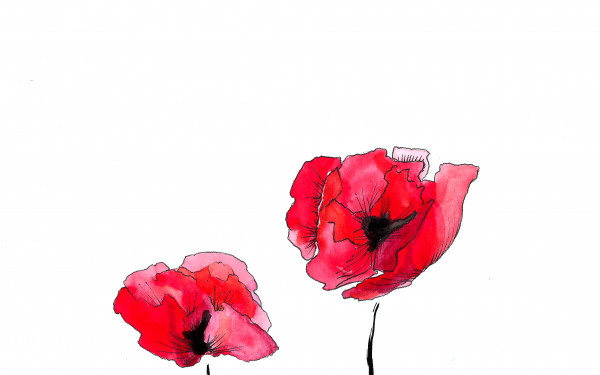Invasion of the (Medical) Body-Snatchers
A People’s History of Canada Column
What do we owe to those that came before us?
Especially when their actions were less than ethical?
The medical world has had to ask itself that question for a long time. The mistreatment of vulnerable communities and people by those working towards medical progress and research has been a black cloud hanging over the medical profession for centuries.
But, what about when the people being experimented on are dead? What then?
Today, we know exactly what the inside of the human body looks like. But we had to get that knowledge from somewhere. In Antiquity and much of the medieval period, anatomy was guesstimated from animal dissections, as human dissection was taboo. The actual dissection of the human body by a trained professional or even an amateur physician was quite rare.
This all changed during the 1800s. As medicine and surgery slowly modernized in Western society, the need for hands-on experience and training grew as the number of students enrolling in university medical courses increased. At King’s College in London, their faculty of medicine was only founded in 1844; by the end of the decade they had 20 students in their anatomy class alone.
Thus, the need for actual human bodies to examine grew, and the supply of legally dissectable bodies given was obviously not enough to fill the needs of universities. This was particularly a problem in Montreal, especially at McGill University. In the mid-1800s, the dissection of human bodies was illegal, and anyone caught doing so could be punished for desecrating human remains. However, the knowledge of anatomy was necessary not only for knowledge’s sake, but to also be able to legally practice as a doctor.
So what do you do? You’ve got to find specimens somewhere, right?
Well, for these medical students looking for cheap ways to get their hands on the oh-so necessary corpse for dissections, grave robbing was the perfect crime. After all, why not claim these bodies from lowly cemeteries that no one cared for anymore? Who would want to leave cold, dead bodies in the ground?
It turns out it just wasn’t as simple as that. Before the 1800s, the limited dissections that were done were performed on prisoners, usually those executed for violent crimes. This unceremonious treatment of the body was only reserved for those considered the worst of society. Of course, this just shows the double standards in their views towards death. Dissecting the body of a well respected member of society, even for what can be considered a noble cause like the advancement of science, wasn’t just unheard of–it was downright illegal.
Now, imagine this: one of your deceased relatives’ grave is hastily dug up by a rowdy McGill student or someone that student paid to dig up the corpse without even thinking of asking if that’s ok with you, all sloppily in the middle of the night. Naturally, you’d probably be really upset, right?
Yet, these “bodysnatchers,” seemingly right out of Mary Shelley’s Frankenstein, were quite active not just at McGill, but in other Quebec and Ontario universities as well. Medical schools were mainly operated in Montreal and Toronto during the mid-1800s, and had opened much later than schools in Europe and the United States. Europe had already gone through its own anatomical growing pains involving grave robbing in the second half of the previous century.
When polite society learned exactly what these university medicine students were doing in the dead of night, they were unbelievably (and reasonably) upset.
At the time, the prevailing argument was that desecration of the human body after death was worse than death itself.
Everyone, from op-ed writers to common citizens, were outraged at the mere thought of the human body being sneakily dug up and cut up, especially by students whose public image at this point was, at best, 19th century frat boys and, at worst, dangerous and unscrupulous criminals.
Who were these grave robbers? For the most part, these were university level medical students who, simply put, needed bodies for experiment and practice, but the Canadian government just wasn’t providing enough bodies to do so. No matter the consequences, they took action into their own hands and found the bodies wherever they could, in cemeteries close by or as far as towns almost 100 kilometers away. Students’ attitudes towards the robbing often depended on the economic and social background of the students themselves. The first woman to graduate from a medical school in Canada was Ann Augusta Stowe-Gullen in 1883. Poorer students were often compelled by the sum of money they would get for the corpse from the medical department, while richer students were more motivated by a sort of romantic, daredevil-esque attitude towards the whole affair.
The students were also aided by their own very secular approach to death as compared to the rest of society. They (usually) didn’t have any personal connection to the people they were dissecting, and they didn’t really care anyway; in their minds, they just needed bodies for class. Of course, to avoid gaining even more backlash than they were already getting, they often raided the burial plots of the poor and downtrodden, those that polite society didn’t mind being dug up as much.
In a few cases, however, the person whose corpse was dug out did attract the attention of the media and politicians, and boy, did they run with it. In 1843, one body carelessly dug up in Chambly resulted in the coffin and the clothes being left in plain sight. Interestingly, the clothes and whatever other possessions the deceased had on them were often left at the scene to ensure the robbers weren’t charged with actual robery. That body just happened to be a well-respected local military sergeant, and when people found out, they were not happy. Newspapers eulogized the life of the sergeant while demonizing the students and anatomy research as a whole, further fanning the flames of outrage.
The colonial Canadian government thought it was time to step in. What did they do? Well, they started by throwing a bone to the students. The Province of Canada (still under direct British rule at the time) enacted the Anatomy Act in 1843, which made sure the bodies of those that died in provincially funded hospitals as well as “poorhouses” (imagine early factories, but where the poorest members of society worked, lived and inevitably died) would have their body collected by officials and sent to medical schools, who kept records on the bodies and were tasked with properly burying them after dissection.
This didn’t end up panning out like the government wanted, and the demand for bodies continued to rise dramatically as the number of medical students rose. As such, they looked for another avenue for corpses.
This is unfortunately where the story goes from “the rambunctious adventures of proto-Indiana Jones” to “woah, hang on that’s super not ok.”
One way Canadian universities figured out how to get corpses was from dead American slaves, whom they acquired cheaply in the years before Emancipation. According to a McGill graduate from the time, Dr. Griffith Evans, the corpses were “obtained cheap, packed in casks, and passed over the border as provisions, or flour.”
Still, the body snatching didn’t cease, and by the first half of the 1880s grave robbing was as widespread as ever. Between December 1882 and March 1883, 26 isolated cases of discovered grave robberies had happened in Greater Montreal. With pleas from the opposition, the medical community, and society at large, amendments were finally brought to the 1843 Anatomy Act in 1883. If medical schools did not get a body from the official channels, they would face heavy fines. Relatives of those whose bodies had been handed over through poorhouses and churches now only had 24 hours to claim the body before it was shipped off to medical students. By 1884, not one grave robbery had been reported in Quebec.
Today, there wouldn’t be anything like the body snatching phenomena of the mid-1800s, not just because of the greater knowledge of the human body, but also because of the far less ethically and morally dubious ways of teaching anatomy we have now, like plastic models, online models, x-rays and computed tomography scans.
So while rowdy college kids aren’t going out in the dead of night anymore to dig up graves for their midterms, it’s important to know that this is just a small part of the pretty messed up history of medicine, and that this is only one of the ways the medical field has acquired its knowledge in less than legal ways.
Marginalized communities were heavily at risk, even when it’s members were no longer alive, and the medical field took advantage of them multiple times throughout history. Were students in the right to pilfer burial plots like they did? Probably not. But to have the government and high society turn around and essentially tell students that they don’t really care if they do this to immigrants, slaves and prisoners is repulsive and cruel, even for the time period.
At the end of the day, these students did do important work in the study of anatomy and advancing science that we still use today. But we can definitely recognize that they used some pretty awful means to get to these ends. It’s a very common theme in the way we look at a lot of history in the mindset of today. People we used to praise as war heroes and pioneers, we now see the other side of the coin, and that they often have a lot of really fucked up actions to account for. We should continue to make use of the findings these people made, without celebrating the people themselves.


_600_832_s.png)


1_600_375_90_s_c1.jpg)

2web_600_375_90_s_c1.jpg)